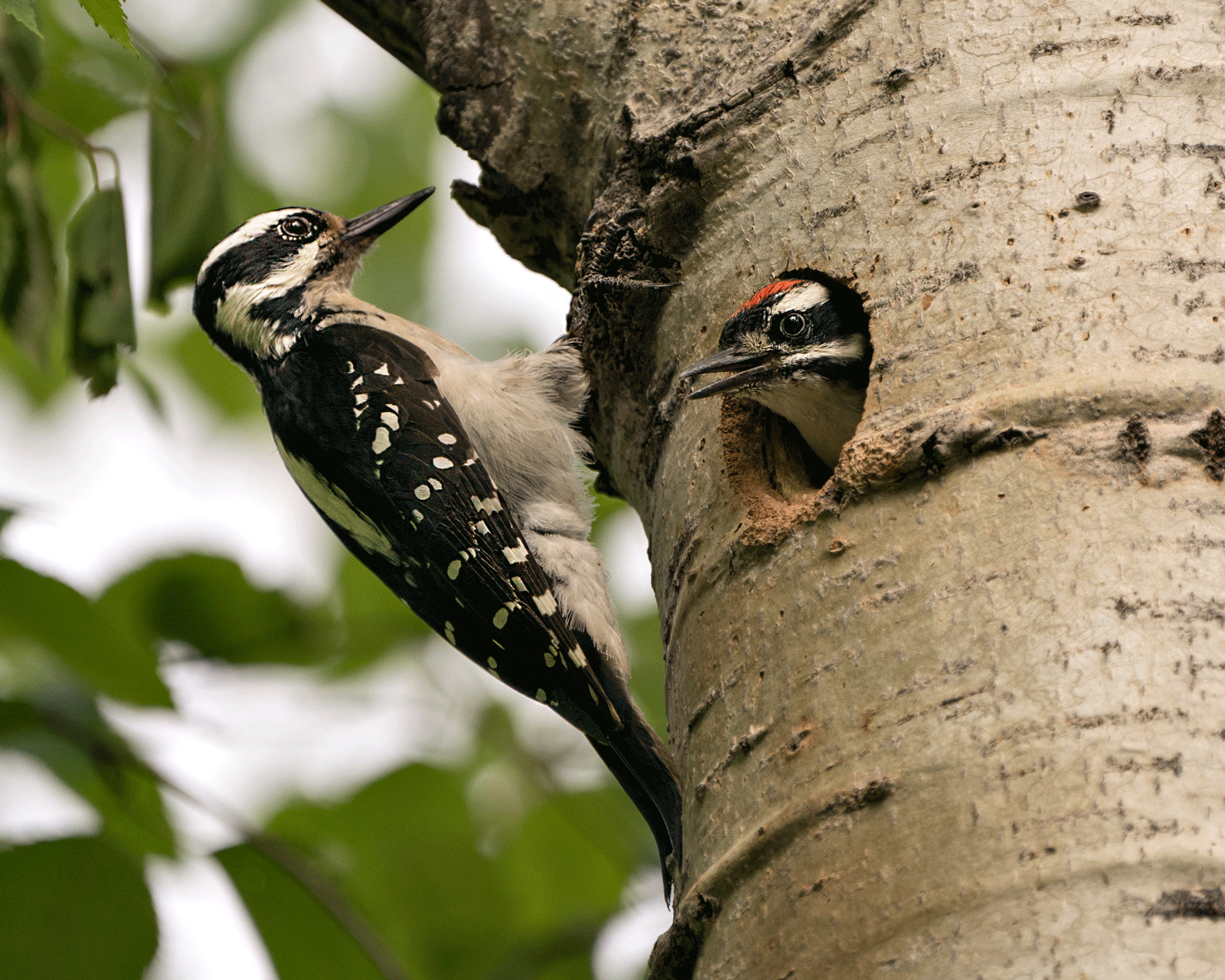Spring and early summer in Colorado's Rocky Mountains means that more feathery friends are looking for a partner and safe home to raise their young. Not all birds are built the same, and not all birds build the same. When we think about a bird building a nest, images of round wicker-like baskets come to mind. The birds that build differently particularly need a helping hand. Introducing the cavity nester!
Cavity-Nesting Birds
The name cavity nester gives away the distinguishing trait of these species. They are birds who have evolved to nest in a cavity, which in North America includes about 85 different species.
There are two types of cavity nesters; primary and secondary. Primary cavity nesters include woodpeckers, some chickadees and wrens. These birds excavate their own homes with their strong beaks and are sub-classified between strong excavators and weak. Strong excavators like the woodpecker can carve into hard and soft woods, while weak excavators like a few species of chickadees and wrens require rotting or decaying wood, called snags. The secondary cavity nesters do not create their own cavities, but instead rely on ones already made. Swallows, bluebirds and the mountain chickadee occupy abandoned cavities, holes from broken branches, or artificial structures. Once the cavity is established, they furnish their new home with comfortable and insulative materials.

Loss of Habitat for Cavity-Nesting Birds
For cavity-nesting birds, housing has become increasingly more difficult to come by. Loss of habitat has become progressively prevalent for cavity nesters. Human development is the main reason there are fewer suitable trees. A misunderstanding of a balanced ecosystem has led forest management to eliminate snags to limit forest insect pests, knock out fuel for fires, and appease aesthetics. When we look at a snag in our ecosystem, we perceive death and potential danger from a fallen tree. While the latter is understandable, snags are really teeming with life from baby birds, bugs, and fungi, providing nutrients back into the soil for years to come.
Ways to Help Cavity-Nesting Birds
One thing we can do to help cavity-nesting birds is to avoid cutting down snags where they do not pose a hazard to human structures or safety. We can also slack on our lawn aesthetics to provide some real substance to the ecosystem because birds love accumulated leaf matter, sticks, and ungroomed shrubbery. Passive involvement is a wonderful way to be a steward for the environment, but for those of you looking to get more active, there are ways you can encourage and assist wildlife.
To show some love to our wildlife, we can provide clean water. If you are somewhere without a naturally occurring water source near you, a fountain can help out. An even more effective way to help is by installing a nestbox, usually called a birdhouse. They require a bit more care as they must be mindfully placed and monitored. Building a nestbox can be a creative outlet, but if you do not have time, a store bought one will work just fine. Key points to placing a birdhouse are that first, they must be placed away from potential predator threats. This means away from busy roads and far from branches predators like cats can climb up. They also require monitoring to ensure the place you have selected is a healthy home. Monitoring is also a wonderfully fulfilling way to watch a bird family grow! You can bear witness to the entire cycle and use this experience as a way to engage your kids in the process.

Tayler Branson is the Lead Naturalist at Walking Mountains Science Center and found her love for birds after leading Summer Bird Walks at the Avon Tang Campus.









